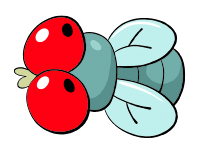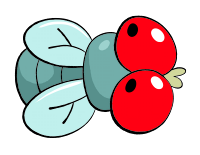FRIDAY THE 21st, SEPTEMBER 2018:
FORCIPOMYIA
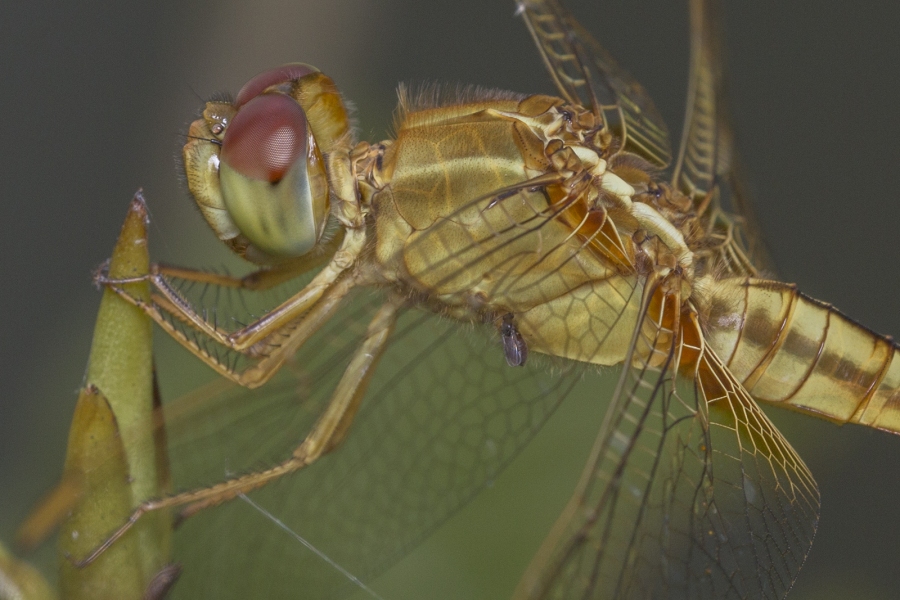
Budak
Look closely at this dragonfly! We last looked at a fly that spends its entire life clinging to a larger insect, a honeybee, to steal food right out of its host's mouth, but today we have a slightly more traditional sort of parasite, which should be pretty easy to spot here, as incredibly tiny as it may be!
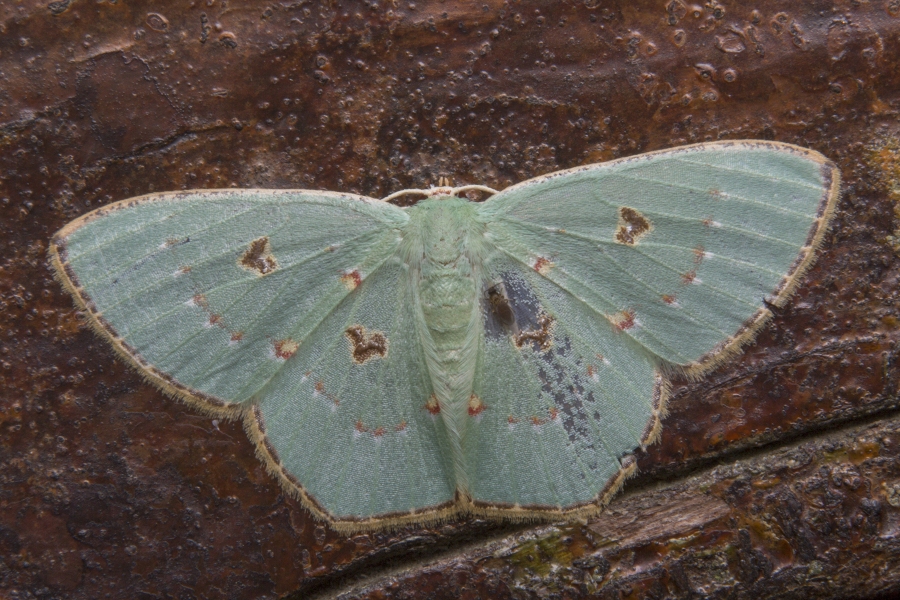
Budak
With all the flies, gnats, mosquitoes, fleas, ticks, lice, bed bugs and mites that enjoy sucking mammalian blood, it seldom occurs to people that "bugs" might ever do this to other bugs, but if a living thing is filled with fluids, you can guarantee that something has learned how to tap those fluids for sustenance.
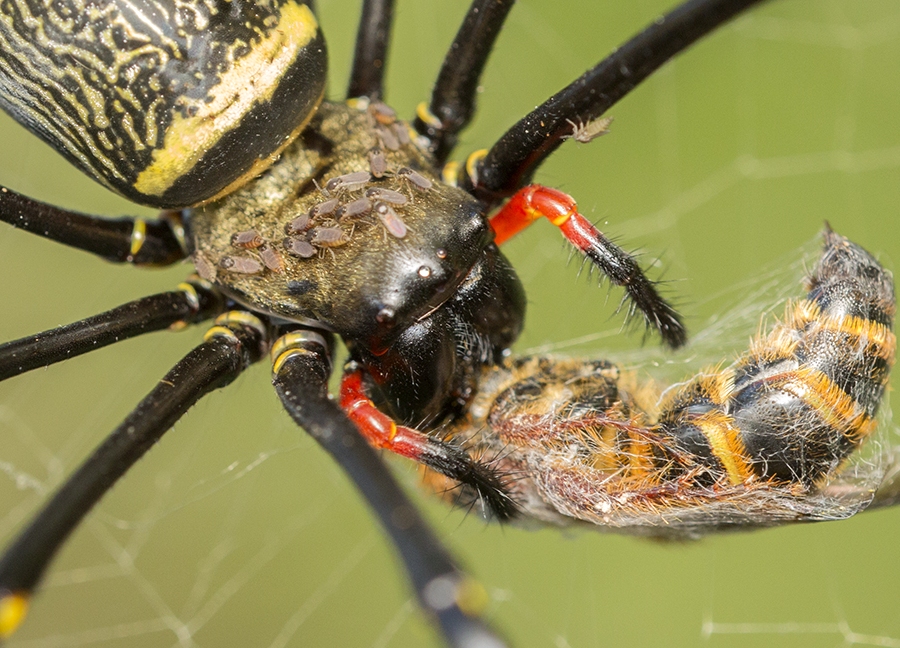
Budak
There are actually more than a thousand species of Forcipomyia, and in fact, it includes several common biting midges that might pester us humans. There are also several species that prefer to suck the blood of amphibians, and a few that don't bite at all. It's worth mentioning that some are also key pollinators of the Cacao tree, where we get our chocolate from, along with certain species of their fellow midges, the fungus gnats.
...But many more Forcipomyia prefer to bite their fellow arthropods, and some of them take it to an even more amazing extreme.
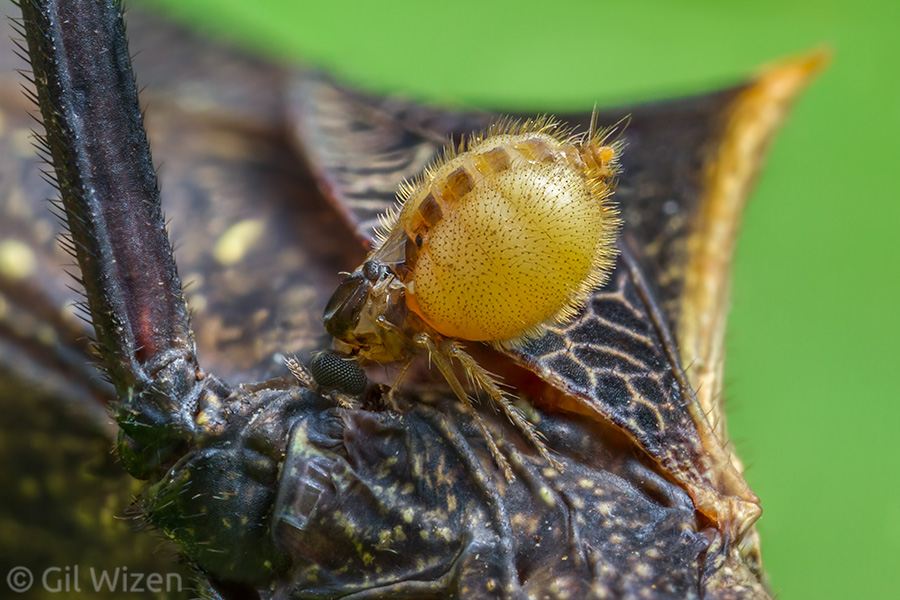
Gil Wizen
I've talked to Entomologist Gil Wizen before about the unbelievable frog-eating beetles he discovered, and he's also taken some of the most amazing photographs you'll ever see of what some have called the tick flies.
In these particular Forcipomyia, a mated female will take one final bite of a larger insect or arachnid and just stay that way. Sucking a continuous stream of Haemolymph to nourish her developing eggs, she even sheds her wings, and she won't drop off the host until she's finally ready to lay those eggs and die. Many different creatures play host to these parasites, but several species seem to favor stick insects, leading to another cute nickname, "stick tick."
More photos of "tick flies" and their amazing transformation process are HERE on Gil's blog, though even this isn't the only cool thing to discuss about the Forcipomyia...
Andy Murray
The larvae of many Forcipomyia are among the most beautifully decorated fly larvae you may ever see. Possessing complete heads and eyes, they aren't true "maggots," but more caterpillar-like animals, and can be found feeding on mildew and bacteria under damp, rotting tree bark or leaf litter.
Andy Murray
Different species bear their own unique ornamentation; some merely have long setae (hairs) that keep predators at a distance. Others carry rows of clear "dew drops" to gum up the jaws of an attack. Still others may grow fleshy, transparent "balloons" that break off and regenerate like the tail of a lizard, and others boast these fuzzy, distracting pom-poms of fluff.
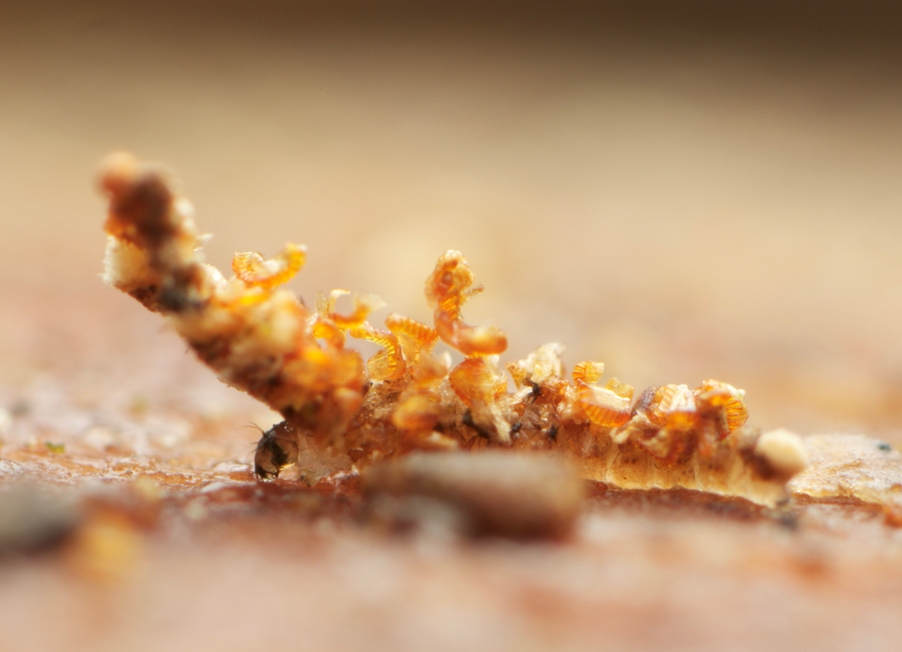
Source
Some of these larvae even take a cue from decorator crabs and use their sticky secretions to affix bits of detritus to their backs, not only camouflaging themselves but constructing what appears to be an entire "false head" extending well beyond their real one, so I guess they're also taking a cue from Mimikyu.
You can read much more about these larvae with a positively stunning selection of photographs HERE, and appreciate the fact that some of the world's smallest, peskiest vampires begin their lives as blown glass clown dragons.

